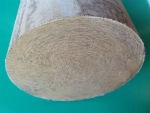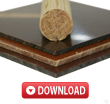Every so often a Tufnol job will land on your desk and machining this old school dusty stuff can present its little challenges. Well recently we managed to get our hands on an old brochure made back in the 90’s, now although the pages had now gone that slightly yellowy colour around the edges, the stuff inside is still relevant. The thing here is that this knowledge has been gained by Tufnol themselves over many decades and by machining literally millions of components in their own machine shop so this stuff as they say, is from the horse’s mouth.
General Principles
Tufnol is machined with standard tools but to get the best results, the tool forms are basically similar to those used for brass. Tool angles are adjusted to reduce heat generation and so that only the cutting edge is in contact with the material as well as being kept very sharp.
High speed steel gives a great finish and good for short runs but longer runs would call for carbide. The glass grades however need carbide for short runs and diamond for long runs. As usual swarf build-up generates heat so needs avoiding and drilling needs that “pecking” action we often talk about.
Speeds and feeds tend to be; high speed with low feed, with light cuts to get the best surface finish.
For most jobs, machining “dry” is the way to go but to get that extra fine finish try using a small amount of light mineral oil. Be careful here though if items are used for electrical jobs as some lubricants can impair it’s electrical properties.
In terms of the dreaded dust, the only solution seems to be plenty of extraction, the more the better, one of those Henry hoover things may even do at an absolute push with perhaps a mask as well, either way any type of dust just cant be good for anyone’s lungs.
Turning
For general work on Tufnol, a tool with no top rake but with a side and front clearance of around 10-15 degrees works well. For heavy cuts a tool with a positive rake of from 0 degrees upto 20 degrees can be a help. Tipped tools though with light finishing cuts and high speeds work pretty well. For instance; a feed of between 1 - 1.5mm per rev with a peripheral speed of 185m/min will provide the best results.
Drilling
Normal twist drills are fine with the point angle needing adjustment to suit the material, so that the full diameter of the drill has actually entered the material before the point breaks through.
The positive rake should be removed to prevent lifting the laminations, the land removed to help swarf removal and the usual Pecking action is recommended. Larger holes are usually done with a wing or fly cutter and trepanning can be carried out with standard wing trepanning cutters.
Holes to be tapped later may need to be drilled slightly oversize as Tufnol may close-in slightly.
Gear Cutting
 The golden rule here is that gears must be cut from sheet Tufnol and not from rod, the teeth on a gear made from rod would have very little strength as rod is made similar to a swiss-roll.
The golden rule here is that gears must be cut from sheet Tufnol and not from rod, the teeth on a gear made from rod would have very little strength as rod is made similar to a swiss-roll.
Teeth can be cut on a miller or gear shaper and for high speed cutters a good average peripheral speed would be something like 43 m/min (140ft/min). Feeds should be reduced to around 15 m/min for cutting steel shrouded gears. Unshrouded gears can be cut in blanks if securely clamped and backed.
Grinding
Centre-less is great for grinding rod and tube and usually done dry, the recommended reduction per run is around 0.25mm, watch out and make sure the wheels dont get clogged though.
Guillotining
Guillotining is fine if the blades are sharp and clean, maximum thickness though is 1mm for paper based and 2.4mm for fabric based grades
Knurling
Knurling isn’t going to work well with Tufnol so maybe machined grooves would work here
Milling & Routing
Millers are preferred when lots of material may need to be removed and routers are preferred when removing smaller amounts. Straight or spiral teeth can be used but spiral will give a smoother finish. One thing to note here is that Tufnol itself is an excellent material for use as a router jig.
Punching
Most grades can be punched upto around 3.2mm thick but the material should be heated to between 80 and 90 degrees C, although fabric based Tufnol can be punched cold upto 1mm. These laminates aren’t ductile like metals and the punch will actually snap the Tufnol which may cause cavitations on the thicker materials. The material must be supported to the maximum possible during the punching process to avoid it shattering and the punch itself must be perfectly smooth
Riveting
Its advisable to use metal washers to allow the rivet end to spread and the hole must have some form of clearance. The distance from the outer edge of the rivet hole and the edge of the material must be at least TWICE the diameter of the rivet.
Tapping
This can be done by hand or by machine but using a machine, the tapping speeds are around 200rpm with a clearing speed of 750rpm. Its possible that the thread may close up a bit.










